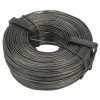Veg tea
tsp=teaspoon
TBSP=tablespoon
per 1gallon of non-chlorine, non-chloramine water
--2TBSP Soil (Soil you always reuse that has already been ammended, or healthy outside soil a few inches deep around where the plants live)
--2TBSP EWC (RedWorms and AfricanNightcrawler EWC mix)
--1TBSP Organic Alfalfa Meal
--1tsp Kelp Meal (Not ground powder, Meal.)
--1/2tsp Glacial Rock Dust or Azomite (or 1/4 tsp of each per 1gal. water) Never too much, compacted powdery substances are not good for microbe air space purposes. It will compact the mix too much. Little goes a huge long way.
--1/2tsp Organic Rolled Oats (not powder, rolled oats for more surface area for fungi to latch onto and feed/grow)
--small unmeasured splash of fulvic acid per entire 4-5gal tea brew
--small unmeasured splash of humic acid per entire 4-5gal tea brew
(Fulvic and Humic acids are not necessary here, but won't hurt anything and provide benefits, never too much.)
--1/4tsp Unsulfered Molasses (All the complex carbohydrates in this mix and long chain slow to breakdown sugars will feed fungi growth, what we want, bacteria is always present, if we use too much Molasses type sugars it will grow the bacteria to insane levels too quickly, and take up all the dissolved oxygen in the bucket faster than can be replenished, the bacteria will take over growing so fast and the tea will shift anaerobic. We want more complex carbohydrates, that take longer to digest, which will give a chance for the fungi to be dominant in the tea brew. so a slightly longer brew, with very very low Molasses, or dont use it all!)
..and if you have it, some High Nitrogen Mexican Bat Guano...
It's not absolutely necessary with the formula I've given that is already rich with many forms of NPK Ca Mg and all trace minerals, but all guano's are amazing stuff, it's their microbe content we want to draw out in the tea and multiply the army of helpers. Mexican guano also trigger a SAR response in plants; Systemic Aquired Resistence. The Mexican Bats eat insects, while Jamaican bats and Indonesian bats eat fruit, and are higher in phosphorus and compounds from fruiting plants. The insect's exoskeleton fools the plant into thinking it is under attack, and turns on its immune response to create killer helper cells, before an attack actually occurs, which makes the plant more resistent to bugs, pathogens, and disease, as well as against frost and heat damage. It tricks the plants to become stronger, BEFORE an attack may come. A little goes a long way. This stuff can burn with it's high levels of nitrogen in salty form, even after bewing in a tea. The microbe digestion action in the tea will 'soften' the salty nutrients in the Mexican Guano to more plant available forms, but still too much will fry the plants. Other Guano's are a little more forgiving.)
--1tsp<->1TBSP High Nitrogen Mexican Bat Guano, usually something like 10-3-1 NPK - per 1gallon of water, depending on the stage of plant life and how strong you want to feed them actual EC/PPM NPK Ca Mg +trace minerals value. The alfalfa is rich in Nitrogen as well, so not too much, we just want to draw out the microbes, mainly, and get some NPK value as a bonus.
Brew the concoction with the least amount of water you can, so that the most amount of oxygen from your pump will increase dissolved oxygen levels in that smaller amount of water, then dilute before feeding to proper amount if you have to. Super high incredible levels of oxygen being pumped into the tea is key here, or you'll be feeding what you think is good brew, but will be shit.
If not to follow precicely, then just to give ideas for you. I would use this to feed nice strong vegging plants.
This is not for young plants, although you could dilute this 50/50, or even to only 25% strength cut it in 4 and will still provide incredible nutrition and diverse life to the soil.
You could also use Peruvian Seabird Guano which is usually something like 10-10-2.5, instead of the Mexican bat guano, or even both in small quantities each here. The PSG is super potent and very nutrition containing elements from the ocean, like Seaweeds/Kelp, and unique diverse microbes from the sea. It's packed with NPK Ca Mg and all trace minerals. Birds eat the fish, those fish have been eating other fish, and so on eating little micro creatures and feeding on seaweeds. Highly nutritious and why it is 10-10-2.5 and complete. I use PSG that is in pellet form, and just toss a few in the tea for extra microbes that wouldn't be there otherwise. This is the way. Microbe diversity, from many many sources.
Smoked a fatty, and this is what happens, it's good shit! ...I don't mean to... teach you or anything, it's just so you understand a couple things in my mixes. cya Hope this helps.











